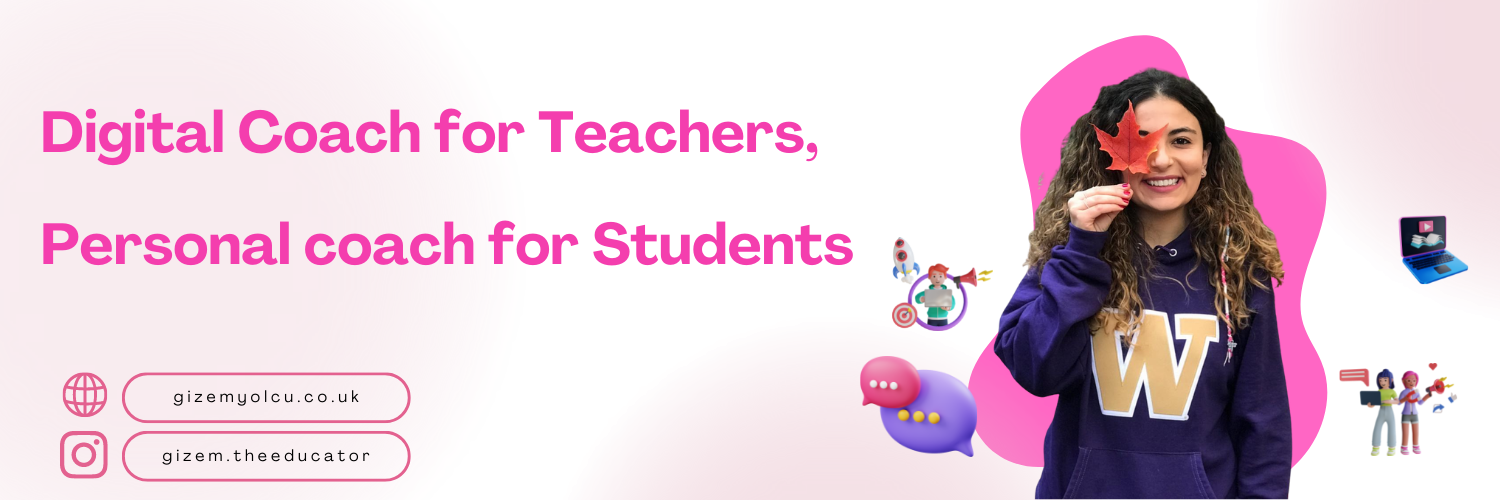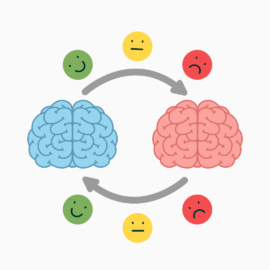

We all still remember the time when it was a luxury to use PowerPoint Slides in our classes. Setting up the projector and showing the slides on a big screen was seen as a radical transformation of a deductive instruction; indeed, it wasn’t. As technology was newly introduced into the classroom, we didn’t have any standards to criticize or reflect on. Starting after 2008, with the growing effect of social media, technology has become an essential part of school instruction. Nowadays, PowerPoint Slides have been replaced by VR Glasses, AR Cards and, even, 3D printers, but the question is that do we know how to use them to create a better learning experience; in other words, do we know how to use them to empower students?
Empowering students do supposedly mean letting students stepping into their own learning process and manage it. To make this happen, the teacher should act as a guide and monitor the learner’s learning process, which requires the teacher to have the knowledge of the tools and methods that students might need or end up employing. Catherine Broom defines empowered person as ‘individuals who feel they have the ability to enact social, political, economic, or other change; to manage or to influence others; and/ or to engage in actions that influence others.’ If we take a closer look at today’s world, we can see how popular and precious it has become to influence others. Surely, the emphasis here is not on how to raise influencers as teachers; however, it is more about how to instill the sense of empowerment to the students which has the pre-requisite of empowering teachers. An empowered teacher is a person who manages and influences their students. Remember the time when you heard one of your students saying “I would like to use the tool you used in the class” which has made you feel proud of yourself. It is not because the tool was a good tool, but it was mostly because you managed to present and show how good that tool is; that is, you made an influence on your student. Thinking from this perception, let’s see some alternative ways of including technology to empower students.
- Blogging / Freedom Writers
Tool: WordPress
If you had watched Freedom Writers movie, you would see what I mean. In the movie, a young teacher asks her students to write a journal after they leave the classroom. Reading their responses, she could figure out how different her students’ needs are. For a teacher, while managing a whole class, it is very hard to see the reason behind students’ behaviors. This practice will not only provide students with freedom of speech but will provide student to have a better academic outstanding, thus, a better student-teacher relationship in an academic context. A research study conducted in the Education University of Hong Kong revealed that when students are academically supported by their teachers, they develop positive academic emotions. In addition, integration of technology into that healthy relationship will enhance the quality of the relationship, as well.
- Reading Online News/ What is happening in the world?
Tool: BBC News
It is a big handicap for individuals to observe what is happening in the world while there is a lot going on. It is easy to remind students to read piece of news every day before going to bed, but how do you think you can be sure that they do? And here is another question: what do you think about reading all together online in the class? As teachers, we all are in a rush to catch up with the curricula we must follow, but 5 mins of reading and realizing what is happening in the other sides of the world wouldn’t hurt anyone. When I first decided to do this three years ago, I could see how those nerd minds turned into curious minds at once. Not only they learnt, but also they shared especially when they read about how Japanese farmers grow cubic watermelons! It was that moment that I realized reading online in the class was the initiating step of raising empowered world citizens.
- Think, Share, Brainstorm / You don’t have to agree!
Tool: Mentimeter
Remembering my schooling times, there were always rules that I had to obey and two sides that I had to choose over the other: agree or disagree. However, what if we don’t have to make decision anymore? Can’t we just listen and think? And, moreover, what about sharing our question marks instead of responses? As Socrates thinks : One gets the answer if they ask the right questions, and those questions will never get yes or no responses. Instead of asking “what do you think about this?”, it will useful to change it to “What kind of questions do you have on your mind?”. It always takes a huge encouragement for students to raise a hand and ask a question, so with technology we can offer them anonymity and comfort, as well.
- Collaborate with the World / The Kids from Other Parts of the World
Tool: Zoom, Bottled
Reminding your student that there are kids taking the same subjects as theirs at the schools of other countries will trigger them to think they are not alone. On the other hand, showing them the actual international classroom environment will amaze them as they are connecting to the world now. During my in person teaching sessions before the pandemic, Wednesdays were important in my classes, as it was the day we used Bottled app to send messages to someone at a random country or to get a message from someone random. During the pandemic, this exciting practice was replaced with meeting a native speaker on zoom and my teaching sessions was looked forward to being attended by my students, which was the greatest joy for me. I could see the spark in their eyes even from the computer screen and how excited they are while asking questions in the target language they are supposed to learn. As a teacher, I was amazed by the fact that the language wasn’t their goal, rather, somehow, they managed to utilize it as a tool, which was the proud moment for me. It was that moment when I realized my students are becoming empowered as their questions were all about the education system in the US.
Being an empowered educator means thinking outside the box or thinking outside the classroom and being able to manage this process and create an influence on the students. As commonsense education says “ Great teaching starts with exploration”, as teachers, we should always keep ourselves updated by exploring and challenging ourselves more. This way, we will be ready to empower our students while empowering ourselves.
References
Briggs, S., (n.d.).How Can You Empower Students In A Connected World?
Retrieved from: https://www.teachthought.com/pedagogy/50-ways-empower-students-connected-world/
Passeport, F., (2016). 3 Ways to empower teachers and transform classrooms.
Retrieved from: https://www.commonsense.org/education/articles/3-ways-to-empower-teachers-and-transform-classrooms
Haggen, M., (2018). Let’s empower teachers to support student learning.
Retrieved from: https://www.ascd.org/blogs/lets-empower-teachers-to-support-student-learning
Broom, C., (2015).Empowering students: pedagogy that benefits educators and learners. Citizenship, Social and Economics Education, 14(2), 79-86. DOI: 10.1177/2047173415597142
Hao, L., & Cui, Y., & Cui, M., (2018). The Relationship between teacher support and students’ academic emotions: a meta-analysis. Frontiers in Psychology.
DOI: https://doi.org/10.3389/fpsyg.2017.02288



